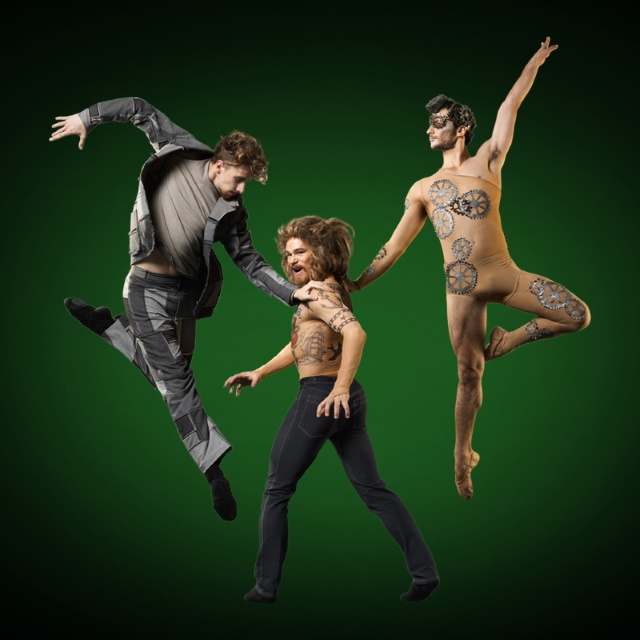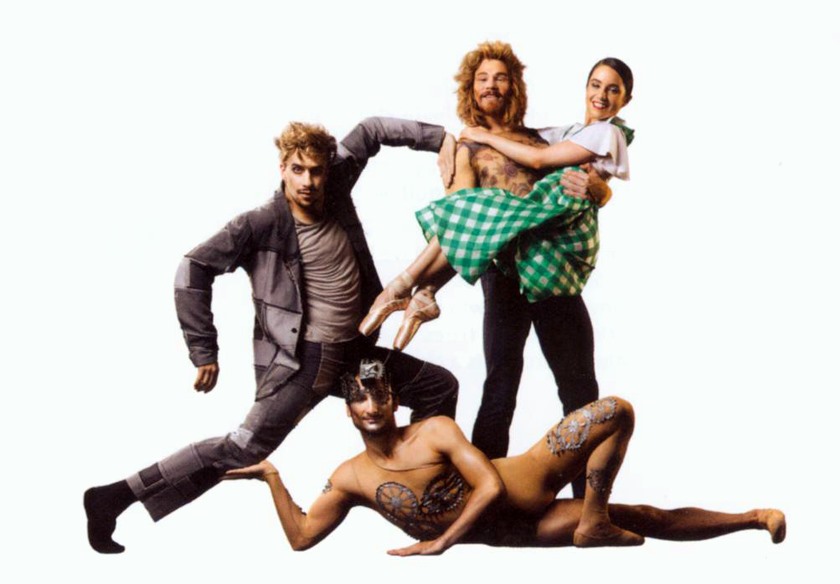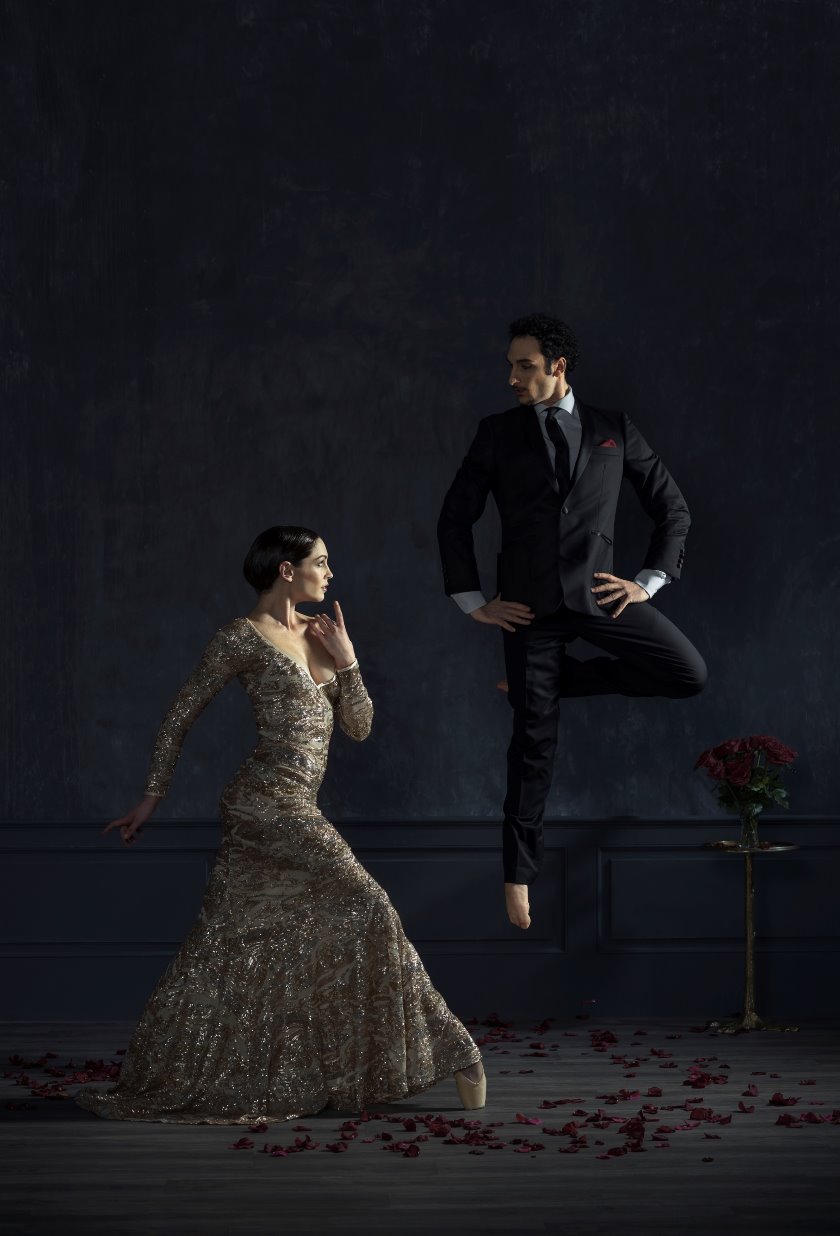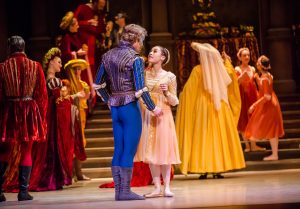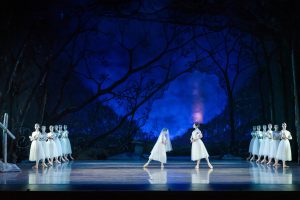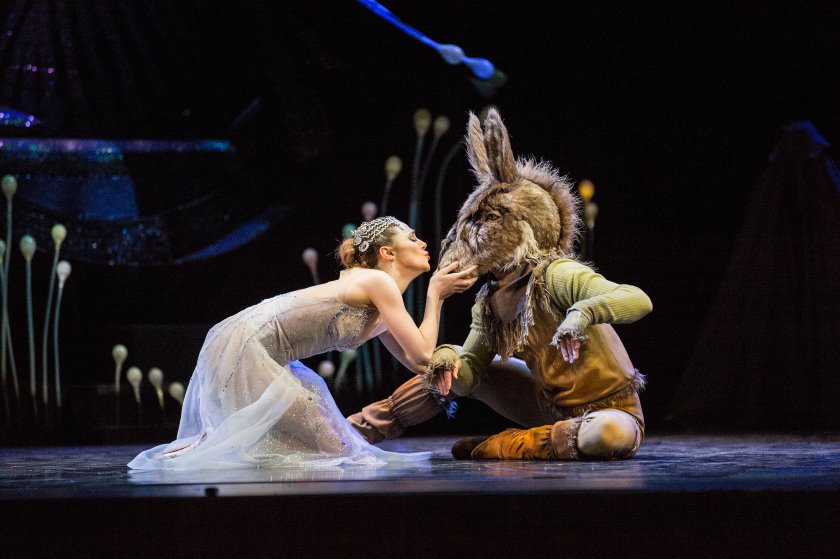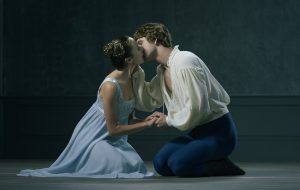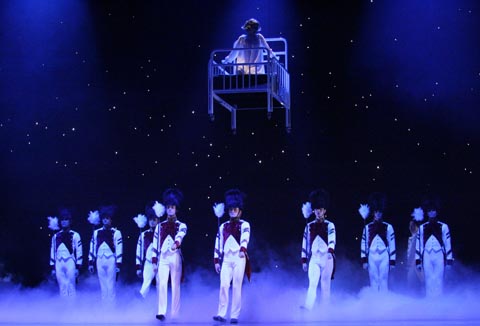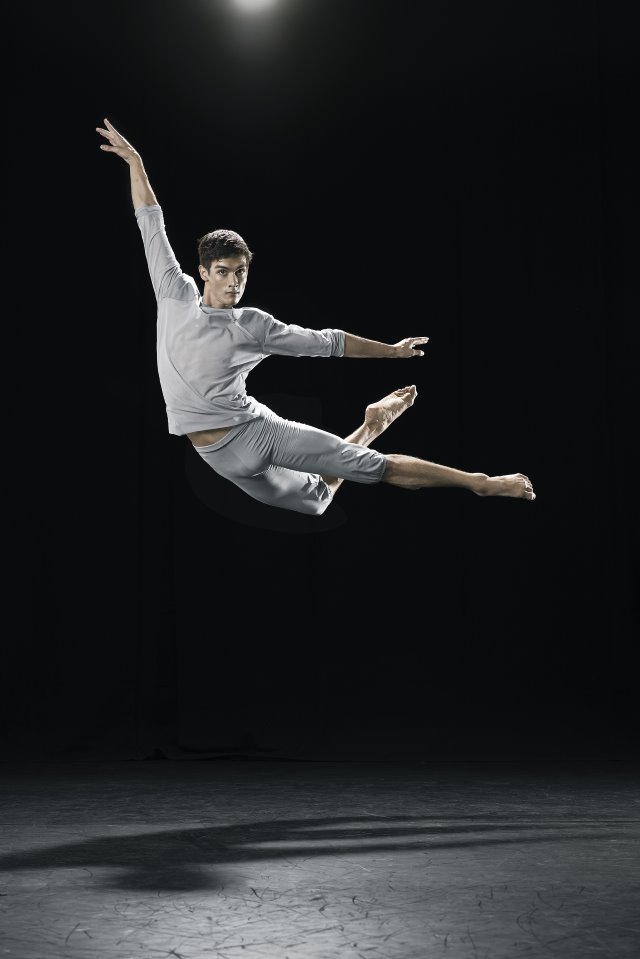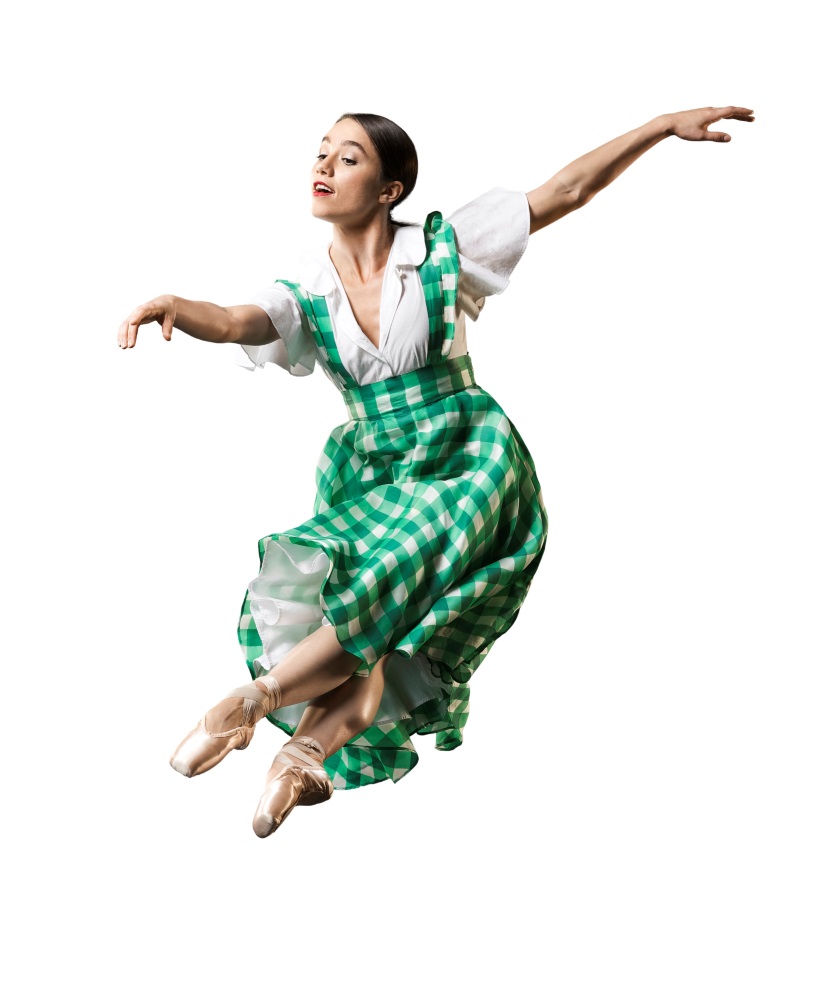
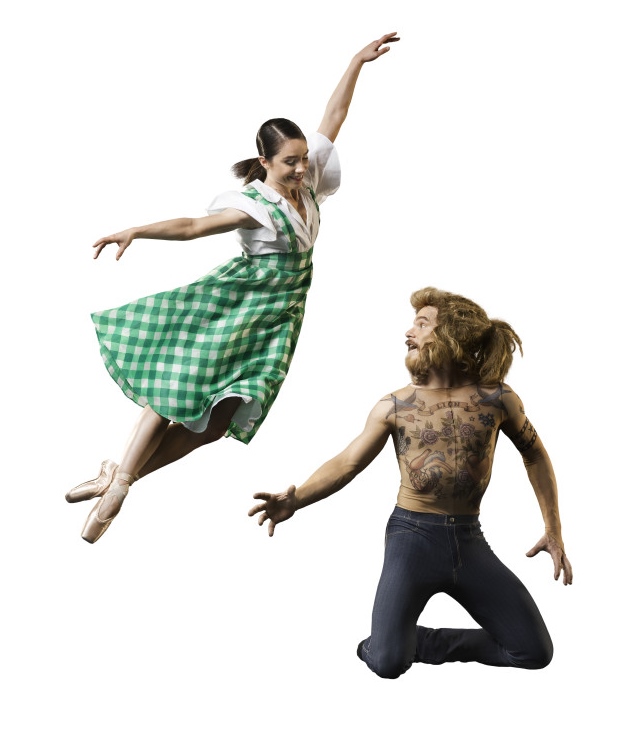
Ross Brown
I truly hope Francesco Ventriglia’s The Wizard of Oz will be performed all over the world, because this family-friendly ballet has all the ingredients for first-time and seasoned watchers alike. What we saw at the world première tonight in Wellington were skilful dancing, moments of contemplation, beautiful staging and design, and a masterful matching to the music of Francis Poulenc.
Based on the book The Wonderful Wizard of Oz by L. Frank Baum, rather than the 1939 MGM film, The Wizard of Oz, audiences are helped by the familiar storyline, which is common to both. Ventriglia keeps the basic idea but takes some different parts from the book compared to the well known film, and in the adaptation to a ballet enhances certain scenes. The structure is of a classical ballet, as are many of the dance moves, including some neatly executed lifts and catches in two pas de deux in Act II, between the Prince and Princess of Porcelain (William Fitzgerald and Laura Jones on opening night), and the Wizard (Fitzgerald again) and Dorothy (Lucy Green).
Ventriglia forgoes the cyclone in favour of a simpler Dorothy in hospital with a coma, watched over by her Uncle Henry (Sir Jon Trimmer), but once she is deposited in the land of the Munchkins, you know that the action has started. The use of this device is very personal to Ventriglia, and can be traced back to when he was five years old in Genova, when he noticed that a girl in isolation in a children’s hospital had gone from her bed one day. His mother told him that she had gone to the Emerald City in the Land of Oz.
A blue sky backdrop links each scene with Dorothy, and on its first appearance in Act I, lights up one’s mood. Gianluca Falaschi, The Wizard of Oz’s designer, approaches the set with both creativity and sensibility. Doors open up revealing different scenes behind the sky set, depending on the context, but it works well, giving the stage additional depth. Watch out for both the Emerald City, which borders on a bright discothèque—and no, there are no shades of 1974’s film The Wiz here—and the Kingdom of Porcelain, which is revealed in the second act. There is one beautiful touch near the close of the second act where the Wizard offers to take Dorothy away, but the fear of revealing spoilers prevent me from telling you just what Falaschi has created.
The costumes deserve extra mention. Glinda, the Witch of the North, danced by Abigail Boyle with plenty of movements en pointe, sparkled with a bright white costume that featured 1,000 sequinned butterflies, giving her an other-worldliness; this contrasted Dorothy’s simpler farm dress that Falaschi says took its cue from the film. Dorothy’s multiple costume changes—her "saucer tutu" for the Porcelain scene, for instance—hint at the chequered pattern of her original dress, so audiences are clear that Green is dancing in the same role. The Witch of the West (Mayu Tanigaito) only has the Flying Monkeys for her allies in this version, but she enters the stage looking sinister, her outfit having connections to more adult themes but considerably toned down for a family audience. The Flying Monkeys, meanwhile, are bare-chested but masked while they are under her spell, wearing large, black skirts. Elaborate, dominating movements convey their evil intent, while the chandeliers and prison cage on the set contrast with the simplicity of the blue sky of Dorothy’s world.
Scarecrow (Loughlan Prior) deserves additional mention since he is the first character to follow Dorothy and, therefore, has a greater role on stage; Prior’s floppy, soft movements convey his character’s construction neatly. Tin Man (Massimo Margaria)’s metallic detailing on his outfit wasn’t as easily seen and almost looked as though he was wearing a body colour, but thankfully this newer interpretation allowed the ballerino much freer movement. Jacob Chown got into his Lion character from his first moment on stage, right through to when he took a bow.
Felipe Domingos, as the Guardian of the Emerald City cut a distinctive figure with his flowing movements, and shone in his first scene; Harry Skinner’s Yellow Cat, chasing after the mice played by Linda Messina and Tonia Looker, was a particularly likeable comedic performance (though one wonders why the cat is bigger than the dog: Toto is a stuffed toy in this version). Watch out, too, for a tap-dancing scene as Green dons red shoes instead of the Silver Shoes from the book.
Falaschi is inspired by 1930s bathing costumes, flapper dresses and cloches, and a bellhop’s uniform for the Guardian, all of which he works in to give The Wizard of Oz, a visual feel that is its own. In all, 37 new costumes were created for the production.
Jason Morphett’s lighting was particularly clever, as Falaschi’s box set forced him to use lights in the corner. He based his concepts on Poulenc’s music, which lent itself well to visuals thanks to its lyrical nature. I tend to find lyrical scores can paint a scene better than those founded on sound effects, and the compilation of various Poulenc compositions, compiled by RNZB pianist Michael Pansters from two dozen recordings, worked well as a complete ballet. Ventriglia calls the score ‘very cinematic,’ and that seems a very apt description.
As detailed in our preview, the ballet began life as an unperformed, single-act ballet, which Ventriglia first conceived when artistic director of Maggio Danze in Firenze. There is an additional meaning here, as Ventriglia, who hails from Italy, has had to ask himself just what ‘home’ means, as Dorothy had to discover: ‘My conclusion is that home is where you feel grounded and comfortable within yourself,’ he writes in the programme. ‘For me that place is the dance studio.’
The work, he writes, has been adapted to the dancing style of the company and the new inspirations he has found in New Zealand since his arrival a year and a half ago.
The Wizard of Oz achieves its aim of being a big-story ballet that appeals to everyone, and audiences will be delighted at this latest production.
The Ryman Healthcare Season of The Wizard of Oz kicks off in Wellington on May 4, and will visit nine centres around New Zealand: Christchurch, Invercargill, Dunedin, Blenheim, Rotorua, Auckland, Palmerston North, and Napier. Further information can be found at the Royal New Zealand Ballet website, www.rnzb.org.nz.—Jack Yan, Publisher
